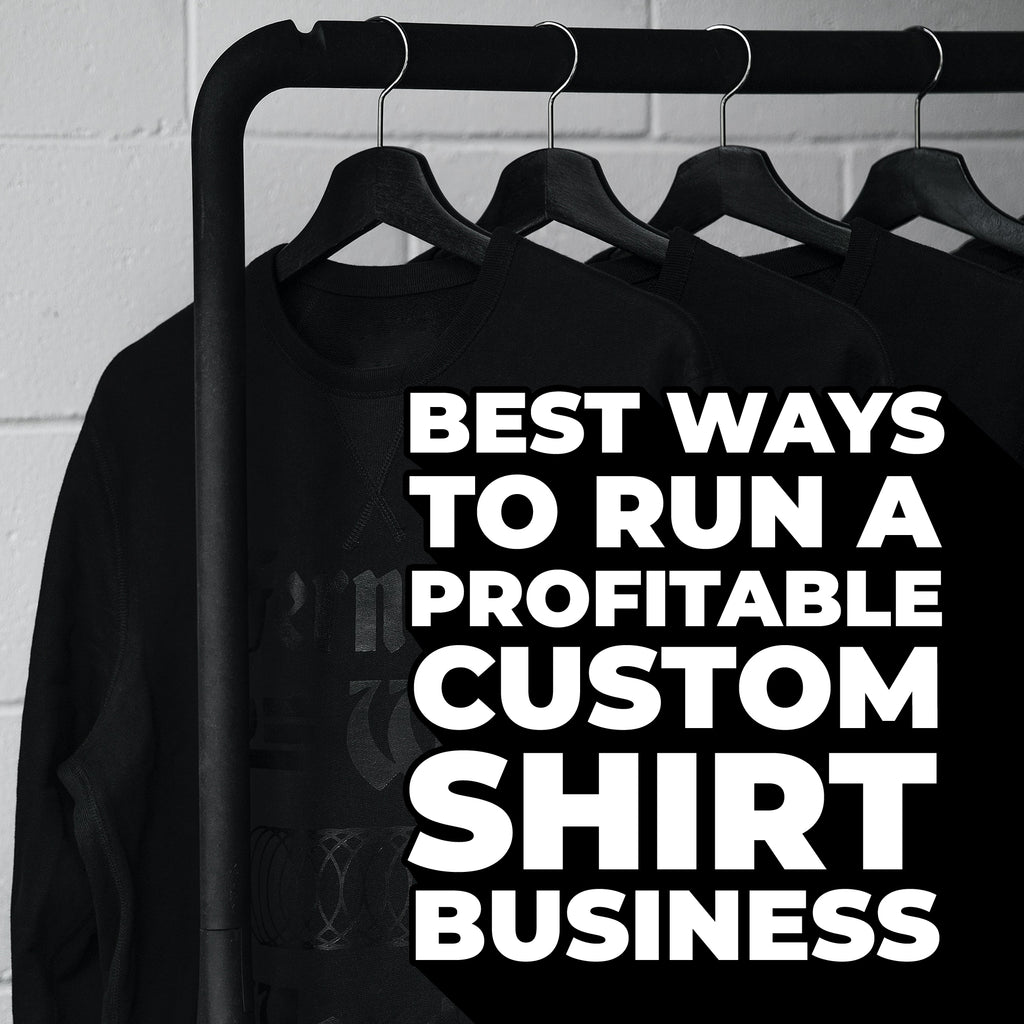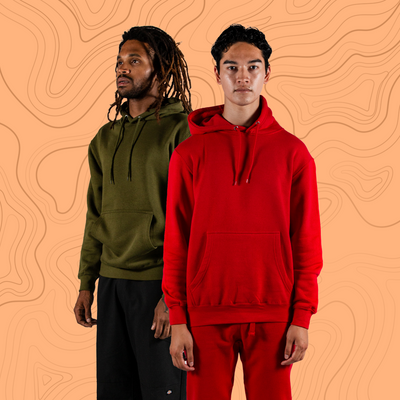Best Ways To Run A Profitable Custom Shirt Business
Posted by VS TEES

If you have a flair for designing T-shirts and an interest in new trends, starting a clothing store line could be an excellent way to channel your talents and ingenuity into a profitable line of work. New entrepreneurs may now sell clothes online and generate income more easily than ever before.
The prospect of running your own shirt business is thrilling, but you should prepare to put in a lot of effort before you start seeing any financial rewards. Here’s all you need to know about successfully running a profitable custom shirt business.

Step 1: Conceptualize
Developing and fine-tuning your concept is the first step to the success of your custom shirt business. Your company is not a hobby; it is a full-fledged enterprise. When creating your T-shirt designs, keep in mind your company’s image.
You need to pick a name for your shirt store before you can start making money. It’s essential to think about your brand identity A.K.A branding while designing your logo, social media posts, business cards, website, and other branded products.
Please spend some time developing ideas and curating them in different ways. It can be hard to tell if a design or slogan will appeal to people, so that you may need more than one version.
Step 2: Look For The Suitable Production Method
When it’s time to print your T-shirt, there’s an ocean of manufacturers to pick from, so make sure you find a reliable shirt provider. You will also have to consider the T-shirt material, ink, durability, quality, and whatever else your potential customer cares about.
To get an idea of how much it would cost to print your T-shirts, compare the prices of local and online printers. A high upfront cost will result in a higher price for your customers, so keep an eye on your profit margin.
Here are some things to consider when looking for a suitable production method:
- T-shirt sizing - Size matters; some audiences favor oversized t-shirts, others tailored ones. Consider male vs. female fit and sizing.
- Fabric weight/quality - Your target market should help you choose t-shirt designs. Organic cotton t-shirts are a must for nature enthusiasts.
- Digital/screen printing - Screen printing can be done at home or outsourced. If you have a screen print design, you may use the same screen to print on aprons and canvas bags to maximize its use.
Step 3: Create Unique Designs
Do you have an excellent concept for a t-shirt that you think your customers might like? Are you seeking a new way to promote your store or a way to make some extra money by selling t-shirts? What about a family reunion or a kid’s birthday party that you would like to remember? Regardless of your motivations, your shirt design is one of the most essential factors in your shirt business because this will set you apart from the competition.
You may commission the work of tens of thousands of talented artists on sites like Creative Market, Fiverr, and Upwork. But a better option is to find a blank shirt provider with an in-house graphic designer like VS Tees to help your designs come alive. It’s like hitting two birds with one stone!
Tip: Ask your friends or family or inquire about what others think about your T-shirt designs by posting them on social media or setting up an online forum where people may participate in focus groups.
Step 4: Look For Places To Sell Your Items Online
When you’re ready to start selling, it’s time to decide on a sales channel. Your website or any online marketplaces are viable options for selling your shirt merchandise.
Using third-party marketplace services like Etsy, Redbubble, and Zazzle have a reputation for selling a lot of apparel, so you may also use that to sell your clothing. Don’t forget that social media like Instagram also has a lot of traffic.
Step 5: Create An Appealing Website
Before earning from your custom shirt store, think about how to make an appealing website. Your website is one of the significant advocates for your brand and is the primary mode of transportation to success. It will help if you will not take any shortcuts here.
An online store is the most affordable way to start a shirt business. Web hosting and its top-up fees are lower than renting a physical store location.
Your clothing brand needs to reflect the style of your website. As soon as they enter your site, customers should know your company’s character and the types of t-shirts they may anticipate purchasing from you. You can communicate these assets more effectively with the help of your website’s visual design and marketing copy.
Take these pro tips into consideration when creating your website:
- Use the colors of your brand.
- Put your logo in a prominent place.
- When you write marketing copy, think about the people you want to reach.
- Show mock-ups that are clear and well-done
- Choose a font that is easy to read and fits your brand’s style.
- Don’t let the design of your t-shirts take over the words or pictures on them. White space is your friend.
Step 6: Marketing Your Shirts
There are various strategies to promote new T-shirts, but they all start with exposure. By now, you must know the profile of your consumers, like their age bracket, gender, mutual hobbies, etc. Social media has become a key advertising tool, and many services exist to help you promote your goods on Facebook, Instagram, Pinterest, and other sites. If your target consumer is anime-loving teenagers, sell your products to social media groups and accounts that cater to the same niche. Of course, you may also sell your custom shirt on your website and other third-party marketplaces like Etsy. Moreover, you may also market your clothes at trade exhibits, craft fairs, and local bazaars.
Another option is to contact micro-influencers and inquire about their engagement cost to determine whether or not they have reasonable conversion rates. New influencers are likely to support a small or medium-sized startup business.
Takeaway
You probably won’t get a thousand orders when your custom shirt business opens, but don’t let that stop you. To run a successful clothing store, you must be tough and come up with creative solutions to problems. Even though your research has shown you what kind of design will help you sell more, your predictions might not match the needs of your target audience right now. So, it’s important to let your customers have their say. Let them decide what kinds of products and designs they like best. If people don’t want one design, try something completely different. If customers don’t like the new design, you can make another one. Pay attention to what people say, and keep trying! You will get there in the end.





